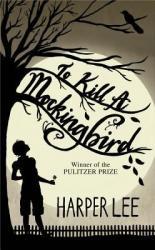
To Kill a Mockingbird by Harper Lee is an amazing story with important underlying themes. I really enjoyed this book. I read To Kill a Mockingbird on my own and then in class, which only made me appreciate the book more. The book explores controversial issues such as prejudice, racism, what it means to be a woman/lady, and growing up, which are all still relevant in today’s society. However, this is not a book for people who enjoy eventful/plot driven stories. To Kill a Mockingbird is more of a character-driven story (in my opinion). Harper Lee’s usage of symbolism, language and setting add to the enjoyment of the book. I could not recommend this book enough. To Kill a Mockingbird is a thought-provoking and classic book that everyone should read before they die.
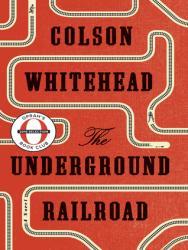
I listened to this book on audio, so I'm sure I missed bits and pieces. Cora's life as a slave in Georgia and through her journey on the underground railroad was fascinating. The depiction of the underground railroad as actually being an underground railroad was odd to me, but I'm sure there's some symbolism or other literary device that escapes me. Probably the most interesting part of this book was the section that took place in North Carolina. It was so indicative of the Third Reich that it was chilling. I found the ending to be abrupt, but still overall an interesting read.
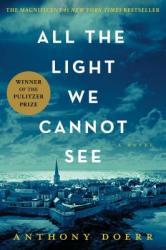
All the Light We Cannot See by Anthony Doerr is the story of two teenagers living during World War Two. Marie-Laure LeBlanc is blind, and lives with her father in France. Werner Pfennig lives in a coal mining town in Germany. As war draws near, Marie-Laure and her father move to the French coast to try to avoid the war while Werner is pressed into service in the German army. Both of the main characters learn to accept and cope with war in their own unique ways. They come of age through the war, and learn to navigate their war-torn world. This novel was recommended to me by my grandmother. I took her recommendation eagerly, as I love studying history. I thoroughly enjoyed the way the author used different points of view to show many sides of one story. Each of the characters must learn to interpret their own experience whether that is Marie-Laure memorizing her way around her city or Werner in his military service. I found both of the main characters very relate-able, despite their story taking place decades ago. Marie-Laure has a never-ending curiosity and Werner is constantly questioning the morals he is presented by his society. These characteristics are things that I think many teenagers, of any era, can relate to. This has been one of my favorite reads this year, and I would highly recommend reading this novel.
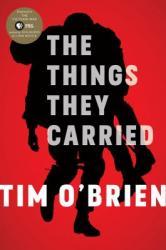
The Things They Carried is a collection of short stories, written by the protagonist (Tim O’Brien), of self reflection about his experiences during the Vietnam War. O’Brien itemizes a list of the things, both tangible and intangible, that members of his platoon have brought with them to war. The plot follows the fate of the Alpha Company members both during and after the war, as well as adding O’Brien’s personal comments on the events he transcribes.
This book humanizes war. It’s no longer one side versus another, but actual people with lives and stories beyond the war. I really enjoy the style O’Brien uses, inserting himself into the story gives the novel verisimilitude. This book is very unlike books I normally read, and I was pleasantly surprised by how much it made me think.
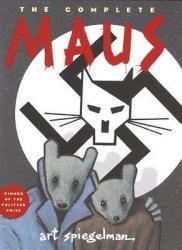
Maus is a two-part graphic survival story of World War II in Auschwitz. It is a true story of Art Spiegelman's father, who was a Polish Jew and was put into Auschwitz, one of the biggest concentration camps in Nazi Germany.
The comic book style is an amazing way to learn history, as it enforces themes through images and tells a story rather than spitting facts, like some history books do. The author portrays different nationalities as different animals, which stands as an ongoing theme in the book: The Jews are the mice and the Nazis are the cats. This makes for an easy relation between the two (cats hunt mice). I am not a huge fan of learning history for the sake of learning history, but I adored this book. I found it intriguing on a very personal level, but also extremely informative. I strongly recommend Maus.
Reviewer Grade: 11
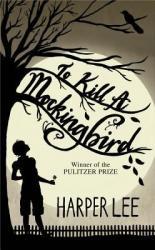
Although it was a little hard for me to get into this book, once I did I was hooked. This book is about Scout, a 7 year old girl who is dealing with the hardship of her father having to defend a black man of rape in the 1940's. Along the way, Scout and her brother Jem meet Dill and they spend their summers together. Dill wants to get Boo Radley to come out of his house, and in the end, he does. With this book is the message to put yourself into others shoes to see how they feel. A classic book, great for anyone.
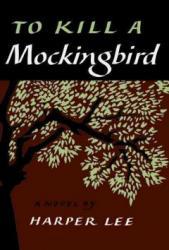
The novel “To Kill a Mockingbird,” by Harper Lee may strike your perception as a seemingly uninteresting story. The book tells the tale of two young children in a sleepy Alabama town, and at face-value, the plot does not garner much intrigue. However, I was in the same situation when I was required to read this book in the spring of my freshman year at high school.
Indeed, while at first the story seemed boring, as I continued to carry on with reading, every turn of the page immersed me ever further into Lee’s timeless story.
As a reader, you share the emotions felt by Jem and Scout, two young siblings, as they learn the nuances of life in the prejudiced American South during the early 1900s. Not only was their community weakened by the economic collapse of the Great Depression, but also sickened by the bitter contempt felt among whites and blacks.
In the beginning of the novel, Jean Louise “Scout” Finch and her brother Jem innocently play games with their friend “Dill” and enjoy life in Maycomb with their father, Atticus. During this time, they have little to no apprehension of the racial tension hanging in their society, but when their father, Atticus Finch, who works as lawyer, openly chooses to defend an African American in court, trouble arises.
Jem and Scout undergo a number of personal developments during the course of the novel. While at first, they carry with them a genuine and child-like innocence, the court trial their father has taken on exposes them to the racist indignity felt by their fellow community members. Jem and Scout struggle to balance their conflict between the social norms of Maycomb and the morals their father has instilled in them. With the trial’s end, Jem and Scout are lead to discover the imperfections of their society, and the ways with which they are forced to deal with them. As the reader follows along, they not only watch Jem and Scout change, but they too themselves are shaped through Lee’s captivating story.
Overall, I enjoyed most aspects of the book. Although some scenes I felt were a bit plain and unprogressive, these minor flaws were overshadowed by the powerful themes Lee expresses through the story. If you haven’t already read To Kill a Mockingbird, I would certainly give the novel a try. If not for the genuine enjoyment of reading the story, try this novel to feel the powerful emotions stirred from Lee’s literary masterpiece.
Reviewer Grade: 10
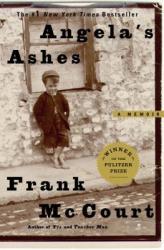
This is an incredible book. One day, while going through some stuff in my basement, I came along this book and decided to read it even though I already have a bazillion books I plan on reading. This one surprised me. It is so funny yet so sad as you get to grow up with this witty young boy through the trials and tribulations of living in Ireland with a dad that can't keep a steady job "enough to feed ya a days meal" and the hardship the school boys bring on the daily. You will probably find yourself crying and laughing at the same time all throughout this book. It's just a work of art.
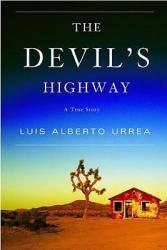
In "The Devil's Highway" Urrea shares the stories of people making great sacrifices to provide for their families. Urrea interviewed the family, friends, coyotes, doctors, and Border Patrol agents linked to the 26 men crossing the border from Mexico to Arizona. Only 12 men survived the journey through the unforgiving desert. Urrea gives insights into the daily lives and aspirations of people wanting a better chance to make a living. He also explains the procedures Border Patrol follows to find people in desperate situations.
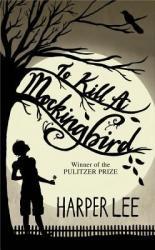
To Kill a Mockingbird shows us that growing up can not always be as easy as it seems. Especially when you live in Maycomb, Alabama, and your father is a lawyer defending a black man. Scout grows up not knowing much about the real world it is not until the trial that turns the whole town upside down that she really discovers how the South is really run. I love how relatable the characters are to teenagers like us today. I love how simple the story line is and the literature is beautiful. It tells you simply how things should be, it states things blatantly through Scout's eyes. The only thing I did not like about the book is that at some points it was hard to follow the story line. Although the story is very simple it got more complex when reading further. I chose this book because I had heard from many people that this was an incredible book and decided to see for myself. The book itself did surprise me as it did have a rather twist ending that was rather unpredictable. The characters were extremely relatable, I could see that in certain situations I would have acted similarly. I would say that it is definitely one of the best book I have read this year or even ever for multiple reasons. It can relate to old and young and describes an issue that still exists today.
Reviewer Grade: 9
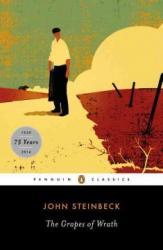
Many readers are immediately turned off by the immense depth and length of this classic (450+ pages). However, within the hundreds of pages, Steinbeck is able to create a realistic world with dynamic characters and an immersive story line. The book takes place during the Great Depression era, and the story follows the Joad family as they travel to California after losing their family farm. The story begins with the main character, Tom Joad, returning home from his time in prison. He quickly finds out that the Joad family farm has been repossessed, partly due to the Dust Bowl, and the entire family must travel to California in search of work. Along the way, the family meets and interacts with many characters facing the same difficulties of the Great Depression. Throughout the book, we see the hardships faced by these characters, which accurately correspond to the struggles of those during the 1930's. As an avid history nerd, I found myself quite intrigued by the story, since I was able to feel more connected to this tragic time in American history. Overall, I greatly enjoyed reading this book, and would strongly recommend it to someone who has an interest in history and enough free time to tackle this classic title.
Reviewer Grade: 11

Set in the 1920’s, this is the story of Jack and Mabel, a childless couple homesteading on the Alaskan frontier. The workload is never-ending, and without children to help with plowing, planting and harvest, they struggle not only to survive, but to avoid losing themselves to despair and disappointment. It is a story not only of survival and grit, but also of the kindness found in a community of like-minded individuals and families. This theme is typical of much historical fiction about western expansion and pioneer life, but this story holds an unexpected and delightful twist, where magic, reality and fairytales intersect. The first snow of the year is met with a playfulness that is not typical of Mabel and Jack. They end their snowball fight by building a snow-child near their cabin, complete with mittens, a hat, and arms made from twigs. The next day, they discover that their snow child was destroyed during the night – likely by wild animals. Their journey from that point is full of hope and expectation. The story has a dream-like, ethereal quality, yet the author maintains the sense of solidity that is required for historical fiction to work. The pace is slow, but fits well with the time and place. I sincerely enjoyed this author’s first novel. It made me think about the importance of accepting others as they are – always an important consideration. I have Eowyn Ivey’s second book in my “to read” stack right now, and will eagerly read her future offerings.
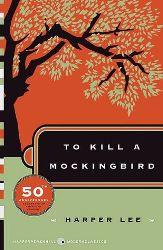
Six year old Scout Finch is living in the small town of Maycomb, Alabama during the Great Depression. Raised by Atticus Finch, Scout and her brother, Jem, are very comfortable with Maycomb and understand the well being of their neighbors, except the house of the mysterious Arthur Radley, whom they obsess over. Half the book is basically about Scout, Jem, and Dill (their new friend) trying to lure Arthur Radley out of his house. However, when Atticus, a lawyer, decides to take the case of a black man named Tom Robinson, tensions become high and the trial to see whether Tom Robinson is guilty or innocent based on his crime and, especially, his skin color is at stake. I absolutely love To Kill a Mockingbird by Harper Lee and it is my #1 favorite book because the structure of this book is so eye-opening since it addresses the struggle and tensions between African- Americans and Whites during a time period where slavery was abolished just less-than a century ago. I highly recommend this book because it is just so jaw-dropping and it hit me with surprises that had me at the edge of my seat.
Reviewer Grade: 10
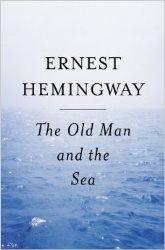
This book is about an old man who is having bad luck in catching fish. One day he goes fishing in the early morning and has the experience of a lifetime. I liked this book because it showed that the journey is more important than the destination. I chose this book because it seemed very meaningful. I enjoyed that very many idle objects represented important concepts. I did not enjoy that the book is so predictable. I cannot relate to the characters because they were very thoughtful and knew what life means. This is not one of the best books I have read all year.
Reviewer Grade: 8
It has taken several days since finishing 'Behind the Beautiful Forevers' for me to put together what I might like to say about it to others. Before now I've basically just resorted to, "Yeah, you should really read this book."
But, yeah, you should really read this book. Even if you're not like me, and you DON'T try to pick at least ONE book about India every time you pile up your requisite stack from the library, you should still really read this book.
Narrative non-fiction books are some of my favorites, and Katherine Boo does an incredible job of telling a true story that reads like a novel. The action takes place in the slum of Annawadi, one of the many shantytowns or slums in the city of Mumbai, India. Mumbai has one of the highest concentrations of people in the world, and nearly 3/4 of the population lives in poverty. Poverty that is abject beyond anything you would see in the United States. No electricity or running water, and diseases that have long been extinct in other developed countries.
Boo has chosen to chronicle the stories and lives of a few of the slum's inhabitants, and it actually gives the reader a closer look at how a specific group of people have inserted themselves into the global market. In a place where so few have so much, and so many have so little, even trash is a commodity that is bought, sold, and traded. Many of the people of Annawadi scrape out a meager existence on the scraps of plastic and metal that are thrown away and discarded by others. I don't think I'll ever look at trash in the same way.
In summary, an excerpt from the advance praise on the book jacket aptly describes the book like this: "There are books that change the way you feel and see; this is one of them. If we receive the fiery spirit from which it was written, it ought to change much more than that." ~Adrian Nicole LeBlanc



 Ruth Holley Library will be temporarily closed for approximately one week starting Mon., Dec. 2 to complete roof repairs.
Ruth Holley Library will be temporarily closed for approximately one week starting Mon., Dec. 2 to complete roof repairs.